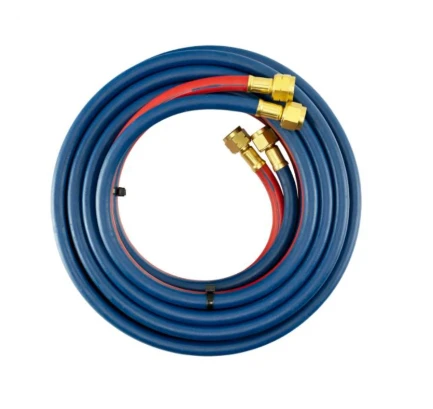types of hoses in fire
Types of Hoses in Firefighting
Firefighting is a critical profession that requires a variety of specialized tools and equipment to effectively combat fires and save lives. Among these essential tools, hoses play a pivotal role. Fire hoses are the lifelines that deliver water or fire-suppressing agents to extinguish flames and protect structures and people. Understanding the different types of hoses used in firefighting is crucial for effective fire management.
1. Attack Hoses
Attack hoses are designed for delivering water to suppress fires directly. These hoses are part of the fire engine’s discharge system and come in various sizes, commonly ranging from 1.5 inches to 2.5 inches in diameter. They are made from durable materials such as synthetic fibers that provide resilience against heat and abrasion.
Attack hoses are further classified into two categories pre-connected hoses and lay flat hoses. Pre-connected hoses are already attached to the fire engine, ready for immediate use. They are typically shorter and lighter for quick deployment during fire emergencies. Lay flat hoses, on the other hand, are stored in rolls and can be extended to reach distant fire locations. They are designed for flexibility and maneuverability, making them ideal for a range of fire scenarios.
2. Supply Hoses
Supply hoses are used to transport water from a hydrant or another source to the fire engine. They are generally larger in diameter, often measuring 3 to 5 inches, allowing for high-volume water flow. Made of robust materials resistant to internal pressure, supply hoses are crucial in ensuring that adequate water supply is maintained during firefighting operations.
These hoses are not only vital for large-scale firefighting operations but also for connecting multiple engines when tackling extensive blazes. High-volume supply hoses can quickly bring substantial amounts of water to the scene, which is essential for fighting fires effectively.
Booster hoses are smaller hoses, typically 1 inch in diameter, designed for quick and portable use. They are often stowed on fire trucks and are used for small fires or for providing water in situations where larger hoses may be impractical. Booster hoses are typically made from a lightweight, flexible material that allows firefighters to maneuver easily in tight spaces or when an immediate response is required.
types of hoses in fire

These hoses are ideal for residential fires or small outdoor blazes where firefighters need to respond quickly but do not require high volumes of water. Their accessibility and ease of use make them an essential tool in a firefighter's arsenal.
4. Wildland Fire Hoses
Wildland fire hoses are specialized hoses designed for wildfires that occur in forested or rural areas. These hoses must withstand tough environmental conditions, including sharp debris, heat, and rugged terrains. They are typically lightweight and highly flexible, allowing firefighters to carry them over long distances and maneuver through difficult landscapes.
Wildland hoses often come with rubber or nylon covers that provide extra protection against abrasions and wear. Their design focuses on minimizing weight without sacrificing durability, making them effective for firefighting efforts far from established water sources.
5. Foam Hoses
Foam hoses are equipped to handle chemical fires or situations where standard water may not be effective. These hoses are specifically designed to deliver foam solutions that smother flames and inhibit re-ignition. They are essential for firefighting in industrial settings or for car fires where flammable liquids may be present.
Foam hoses often require additional equipment, such as foam nozzles, to properly mix the foam concentrate with water. The effectiveness of foam hoses lies in their ability to create a barrier over the fuel surface, making them a crucial tool for certain fire scenarios.
Conclusion
In summary, understanding the various types of hoses used in firefighting is essential for effective fire response and management. From attack and supply hoses that deliver water directly to the source of a fire, to specialized hoses like wildland and foam hoses, each type has its unique purpose and application. Proper knowledge and utilization of these hoses can greatly enhance a firefighter’s ability to protect lives and property in times of crisis.
-
Welded Wire Mesh Panel: Durable, Versatile, and AffordableNewsJul.28,2025
-
Top Quality Oxy Acetylene Hoses for Sale Fit for Welding DemandsNewsJul.28,2025
-
The Future of Pneumatic Air Tubes in IndustryNewsJul.28,2025
-
Superior and Reliable LPG Hose Pipe Solutions for Every NeedNewsJul.28,2025
-
Exceptionally Durable and Versatile Premium Braided PVC TubingNewsJul.28,2025
-
Best Adapters for Connecting Garden Hose to PVC Pipe ConnectionsNewsJul.28,2025














